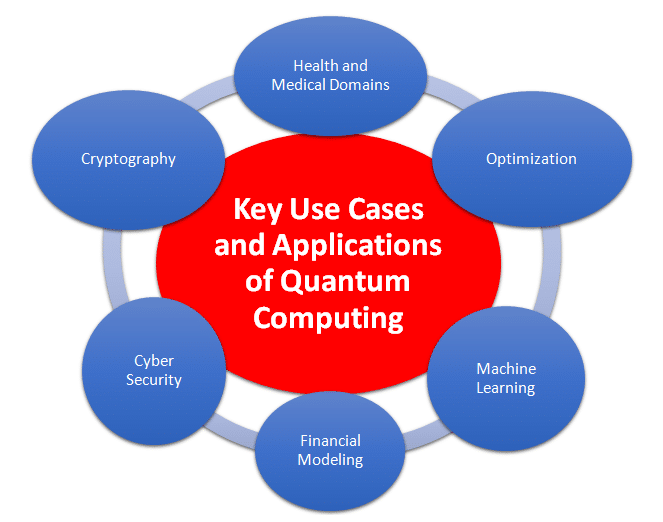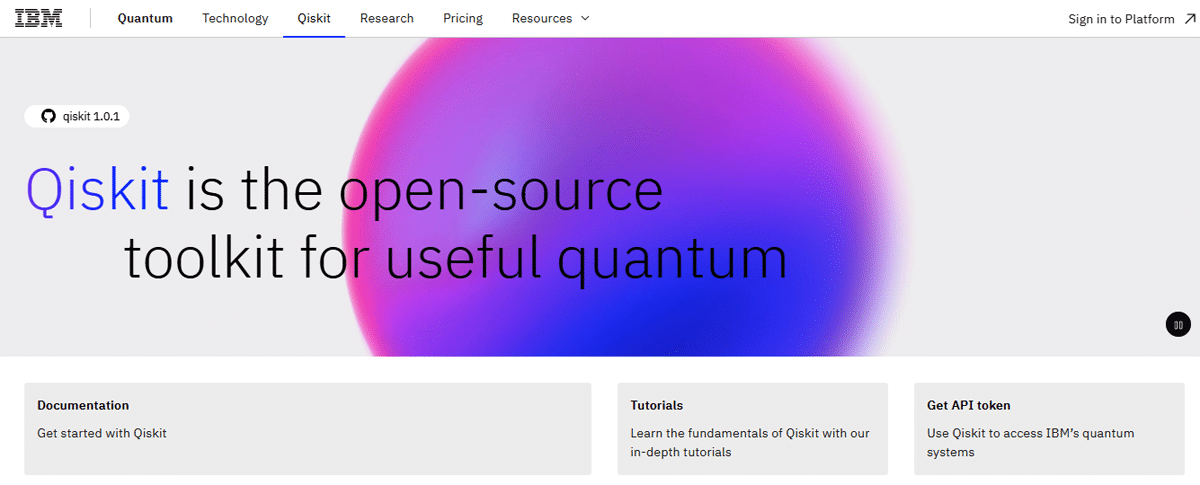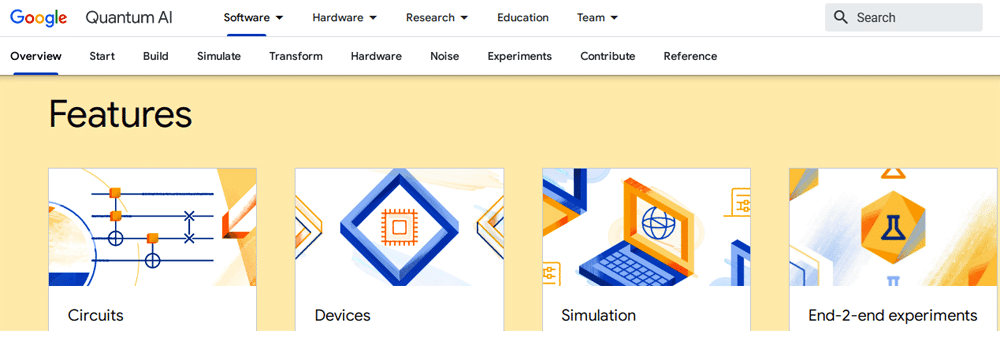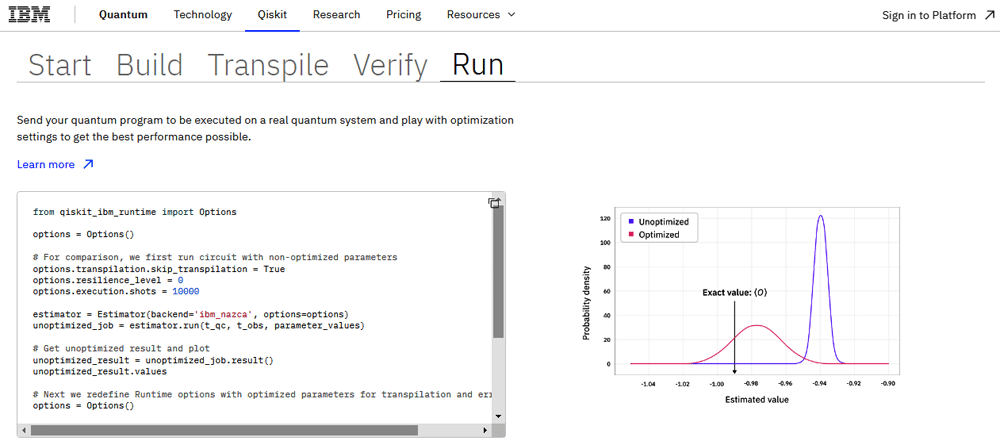Quantum computing is the future, offering a range of use cases to transform everyday lives. A few challenges still need to be overcome, but there are quite a few programming platforms for quantum computing-based applications that cater to different needs and expertise levels. We look at some of these and see how developers can benefit from them.
Quantum computing leverages the principles of quantum mechanics to perform complex computations at unprecedented speeds. Unlike classical computers, which use bits as the smallest unit of information (either 0 or 1), quantum computers use quantum bits or qubits. Qubits can exist in multiple states simultaneously due to the phenomenon of superposition, and they can also be entangled, meaning the state of one qubit is dependent on the state of another, regardless of the distance between them. These unique properties enable quantum computers to tackle problems that are currently intractable for classical computers.
Use cases of quantum computing
One prominent use case of quantum computing is in cryptography. Quantum computers have the potential to break widely used encryption algorithms, such as RSA and ECC, by quickly factoring large numbers, which are the basis of these algorithms’ security. This has spurred efforts to develop quantum-resistant encryption methods.

Another area where quantum computing shows promise is in optimisation problems. These include route optimisation, supply chain management, and financial portfolio optimisation. Quantum algorithms like the Quantum Approximate Optimisation Algorithm (QAOA) and the Quantum annealing approach can efficiently explore vast solution spaces and find optimal or near-optimal solutions much faster than classical algorithms.
Quantum computing integrates the applications in drug discovery and materials science. Quantum simulators can model the behaviour of molecules and materials with unprecedented accuracy, helping researchers design new drugs, catalysts, and materials with desired properties.
The potential of quantum computing is indeed staggering, with numerous industries poised to benefit from its capabilities.
Cryptography and security: With the looming threat of quantum computers breaking widely used encryption algorithms, the urgency to develop quantum-resistant encryption methods has intensified. For instance, the National Institute of Standards and Technology (NIST) has been actively soliciting proposals for post-quantum cryptography standards.
The researchers at the Massachusetts Institute of Technology (MIT) have unveiled a new quantum-resistant encryption protocol called ‘Lattice-Based Encryption’, which has shown promising results in resisting attacks from both classical and quantum computers.
Optimisation problems: Quantum computing excels in solving optimisation problems due to its ability to explore vast solution spaces simultaneously. Volkswagen, for instance, has been exploring the use of quantum computing to optimise traffic flow in urban areas, aiming to reduce congestion and emissions.

In 2023, D-Wave Systems announced the release of its Advantage quantum computer, boasting over 5000 qubits and improved coherence times, making it better suited for tackling real-world optimisation challenges.
Drug discovery and materials science: Quantum simulators have shown remarkable promise in accurately modelling molecular structures and properties, significantly speeding up the drug discovery process. In 2021, the collaboration between Google Quantum AI and Harvard University demonstrated the use of quantum algorithms to simulate the electronic structure of small molecules with unprecedented accuracy, paving the way for more efficient drug design. Quantum computing is also being explored in materials science for designing novel materials with tailored properties, such as superconductors and lightweight alloys.
Milestones and developments
In August 2019, Google made headlines by claiming to have achieved quantum supremacy with its 53-qubit Sycamore processor, completing a calculation in 200 seconds that would take traditional supercomputers thousands of years.
In June 2023, researchers at the University of Science and Technology of China published a paper in the journal Science, detailing their achievement of quantum supremacy using a photonic quantum computer. Their device, employing 76 photons, outperformed classical computers in a specific computational task.
IBM continues to make strides in quantum computing accessibility through its IBM Quantum Experience platform, which provides cloud-based access to quantum processors and a suite of tools for quantum algorithm development.

Challenges and future outlook
Despite these advancements, challenges such as qubit stability, error correction, and scalability remain significant hurdles in the path towards practical quantum computing.
Companies and research institutions worldwide are actively working on addressing these challenges, with investments pouring into qubit technologies, error mitigation techniques, and quantum algorithm development.
Quantum computing is expected to have a transformative impact across various sectors in the coming years, revolutionising fields ranging from finance and logistics to healthcare and materials science.
These developments underscore the growing momentum in the field of quantum computing and its potential to reshape our technological landscape in profound ways.
Programming platforms for quantum computing based applications
Different programming platforms for quantum computing-based applications cater to different needs and expertise levels. These platforms offer tools, libraries, and resources for developing, simulating, and running quantum algorithms. Here are some notable ones.
IBM Quantum Computing Platform
https://quantum-computing.ibm.com/
IBM Quantum Experience provides cloud-based access to quantum computers as well as simulators. Users can write quantum circuits using Qiskit, IBM’s open source quantum computing framework. It offers a range of tutorials, documentation, and community support for both beginners and experienced users. It also offers high-level abstractions for quantum circuits, algorithms, and applications. The platform includes simulators for testing quantum programs and provides educational resources such as tutorials, textbooks, and community forums.
Microsoft Quantum Development Kit
https://www.microsoft.com/en-us/quantum/development-kit
Microsoft’s Quantum Development Kit includes Q (Q Sharp), a domain-specific programming language for quantum computing. Developers can use Q to write quantum algorithms and test them using simulators provided in the kit. It also integrates with Visual Studio and offers extensive documentation and learning resources. The kit includes a quantum simulator for testing and debugging quantum algorithms locally before running them on quantum hardware. Microsoft also offers extensive documentation, tutorials, and learning resources to support developers in exploring quantum computing.
Google Cirq
https://quantumai.google/cirq
Cirq is an open source framework developed by Google for writing, simulating, and running quantum circuits. It is designed to be flexible and suitable for both researchers and developers. Cirq supports Python and provides tools for quantum algorithm development and hardware interaction. It offers tools for creating and manipulating quantum circuits, as well as interfaces for interacting with quantum hardware. The framework is designed to be flexible and extensible, making it suitable for both algorithm development and hardware testing. Google offers comprehensive documentation, tutorials, and examples to help users get started with Cirq.
Rigetti Forest
https://www.rigetti.com/forest
Rigetti Forest is a full-stack quantum computing platform offered by Rigetti Computing. It includes tools for writing quantum programs in Quil (Quantum Instruction Language) and executing them on Rigetti’s quantum processors or simulators. The platform supports Quil, Rigetti’s quantum instruction language, which allows users to define quantum circuits and execute them on Rigetti’s quantum processors or simulators. Rigetti Forest also provides access to Quantum Cloud Services, enabling users to scale up their quantum computations and run them remotely on Rigetti’s cloud-based infrastructure.
Amazon Braket
https://aws.amazon.com/braket
Amazon Braket is a fully managed quantum computing service provided by Amazon Web Services (AWS). It allows users to explore and experiment with quantum algorithms using simulators and quantum hardware from different technology providers, including D-Wave, IonQ, and Rigetti. Developers can access Braket through the AWS console or APIs. The platform supports multiple programming languages, including Python and Qiskit, and offers simulators for testing quantum circuits. Amazon Braket is integrated with the AWS ecosystem, allowing users to leverage additional services for data management, security, and scalability.
These platforms offer a range of features and capabilities, including quantum algorithm development, simulation, and access to quantum hardware. Depending on the specific requirements and preferences, developers and researchers can choose the platform that best suits their needs for exploring the exciting field of quantum computing.

Working with cloud-based quantum compatible languages
Working with cloud-based quantum-compatible languages offers developers a gateway into the fascinating realm of quantum computing, providing access to quantum processors, simulators, and comprehensive development environments. These languages are tailored to harness the power of quantum mechanics while integrating seamlessly with cloud computing infrastructures. Here’s a look into how developers can leverage cloud-based quantum-compatible languages.
Access to quantum processors: Cloud-based quantum-compatible languages, such as Qiskit for IBM Quantum Experience or Q for Microsoft Quantum Development Kit, enable developers to interact with real quantum processors via the cloud. This access allows developers to execute quantum algorithms on quantum hardware without needing to set up and maintain physical quantum computers themselves.
Simulation and debugging: These languages come equipped with simulators that mimic the behaviour of quantum systems, allowing developers to test and debug their quantum algorithms efficiently. Simulators provide a sandbox environment for exploring quantum concepts and optimising algorithms before deploying them to actual quantum hardware.
Development environment: Cloud-based quantum-compatible languages offer integrated development environments (IDEs) or interfaces where developers can write, compile, and execute quantum code seamlessly. These environments often include features such as syntax highlighting, code completion, and debugging tools tailored to quantum programming.
Educational resources: Many cloud-based quantum computing platforms provide extensive educational resources, including tutorials, documentation, and community forums. These resources help developers, whether beginners or experienced professionals, to learn quantum programming concepts, explore quantum algorithms, and collaborate with peers in the quantum computing community.
Scalability and accessibility: By leveraging cloud computing infrastructure, quantum-compatible languages offer scalability and accessibility to developers worldwide. Users can easily scale up their quantum computations by harnessing the computational resources available on the cloud, without being limited by the constraints of local hardware.
Integration with existing tools: Cloud-based quantum-compatible languages often integrate with existing tools and technologies, facilitating seamless workflow integration for developers. For example, Microsoft Quantum Development Kit integrates with Visual Studio, while IBM Quantum Experience provides APIs for integrating quantum computing capabilities into existing applications and workflows.
Support and community: Developers working with cloud-based quantum-compatible languages can benefit from robust support and vibrant communities. Platforms often offer dedicated support channels, forums, and community events where developers can seek assistance, share insights, and collaborate on quantum computing projects.
We now look at code snippets using two popular cloud-based quantum-compatible languages.
Quantum implementation using Qiskit (Python)
Import necessary modules from Qiskit from qiskit import QuantumCircuit, Aer, transpile, assemble Create a quantum circuit with 2 qubits and 2 classical bits qc = QuantumCircuit(2, 2) Apply a Hadamard gate to the first qubit qc.h(0) Apply a CNOT gate with control qubit 0 and target qubit 1 qc.cx(0, 1) Measure both qubits and store results in classical bits qc.measure([0, 1], [0, 1]) Choose the Aer simulator as the backend simulator = Aer.get_backend(‘qasm_simulator’) Transpile the circuit for the chosen simulator transpiled_qc = transpile(qc, simulator) Assemble the transpiled circuit for execution qobj = assemble(transpiled_qc) Execute the circuit on the simulator result = simulator.run(qobj).result() Get counts of the measurement outcomes counts = result.get_counts() Print the measurement outcomes print(“Measurement outcomes:”, counts)
Output for example 1: Qiskit (Python)
Measurement outcomes: {‘00’: 515, ‘11’: 509}
This output indicates that the simulator produced approximately equal numbers of ‘00’ and ‘11’ outcomes, which is expected for the entangled state produced by the Hadamard and CNOT gates.
Quantum implementation using Q (Q Sharp)
// Define a quantum operation to create an entangled state
operation Entangle(qubit1 : Qubit, qubit2 : Qubit) : Unit {
H(qubit1);
CNOT(qubit1, qubit2);
}
// Define a quantum operation to measure qubits and return the result
operation MeasureEntangled(qubit1 : Qubit, qubit2 : Qubit) : (Result, Result) {
let result1 = M(qubit1);
let result2 = M(qubit2);
return (result1, result2);
}
// Define a driver operation to run the quantum operations
operation RunEntanglementProtocol() : (Result, Result) {
// Allocate two qubits
using (qubit1 = Qubit(), qubit2 = Qubit()) {
// Entangle the qubits
Entangle(qubit1, qubit2);
// Measure the entangled qubits
let (result1, result2) = MeasureEntangled(qubit1, qubit2);
// Return the measurement results
return (result1, result2);
}
}
Output
When `RunEntanglementProtocol()` operation is executed, it returns a tuple of measurement results `(Result, Result)`, where each `Result` represents the outcome of measuring a qubit.
These examples demonstrate how to create simple quantum circuits, apply quantum gates, simulate measurements, and execute quantum operations using Qiskit and Q. Developers can run these code snippets in their respective environments (e.g., IBM Quantum Experience for Qiskit or Microsoft Quantum Development Kit for Q) to explore quantum computing concepts and experiment with quantum algorithms.
The scope of research in the simulation of quantum computing is vast and multifaceted.
Algorithm development: Researchers can explore and develop new quantum algorithms for various computational tasks, such as optimisation, cryptography, and machine learning. By simulating these algorithms, they can analyse their performance, scalability, and potential advantages over classical counterparts.
Error correction and fault tolerance: Investigating error correction techniques and fault-tolerant quantum computing is crucial for overcoming noise and decoherence in quantum systems. Simulation allows researchers to evaluate the effectiveness of error correction codes and protocols in mitigating errors and improving the reliability of quantum computations.
Quantum hardware design and optimisation: Simulating quantum hardware architectures and components enables researchers to optimise device performance, explore novel designs, and address scalability challenges. This research can lead to the development of more efficient and reliable quantum processors.
Quantum information and entanglement: Studying the properties of quantum information and entanglement through simulation can deepen our understanding of fundamental quantum phenomena. Researchers can investigate quantum communication protocols, quantum teleportation, and quantum cryptography to unlock new avenues for secure communication and information processing.
Chemistry and materials science: Simulation of quantum systems plays a crucial role in computational chemistry and materials science. Researchers can use quantum simulators to model molecular structures, predict chemical reactions, and design new materials with desired properties, paving the way for advances in drug discovery, catalysis, and materials engineering.
Educational tools and outreach: Developing educational simulations and tools can help bridge the gap between theory and practice in quantum computing. By creating user-friendly interfaces and interactive environments, researchers can engage students, educators, and the general public in learning about quantum concepts and algorithms.
The simulation of quantum computing offers a rich landscape of research opportunities spanning algorithm development, error correction, hardware optimisation, fundamental physics, and interdisciplinary applications.




